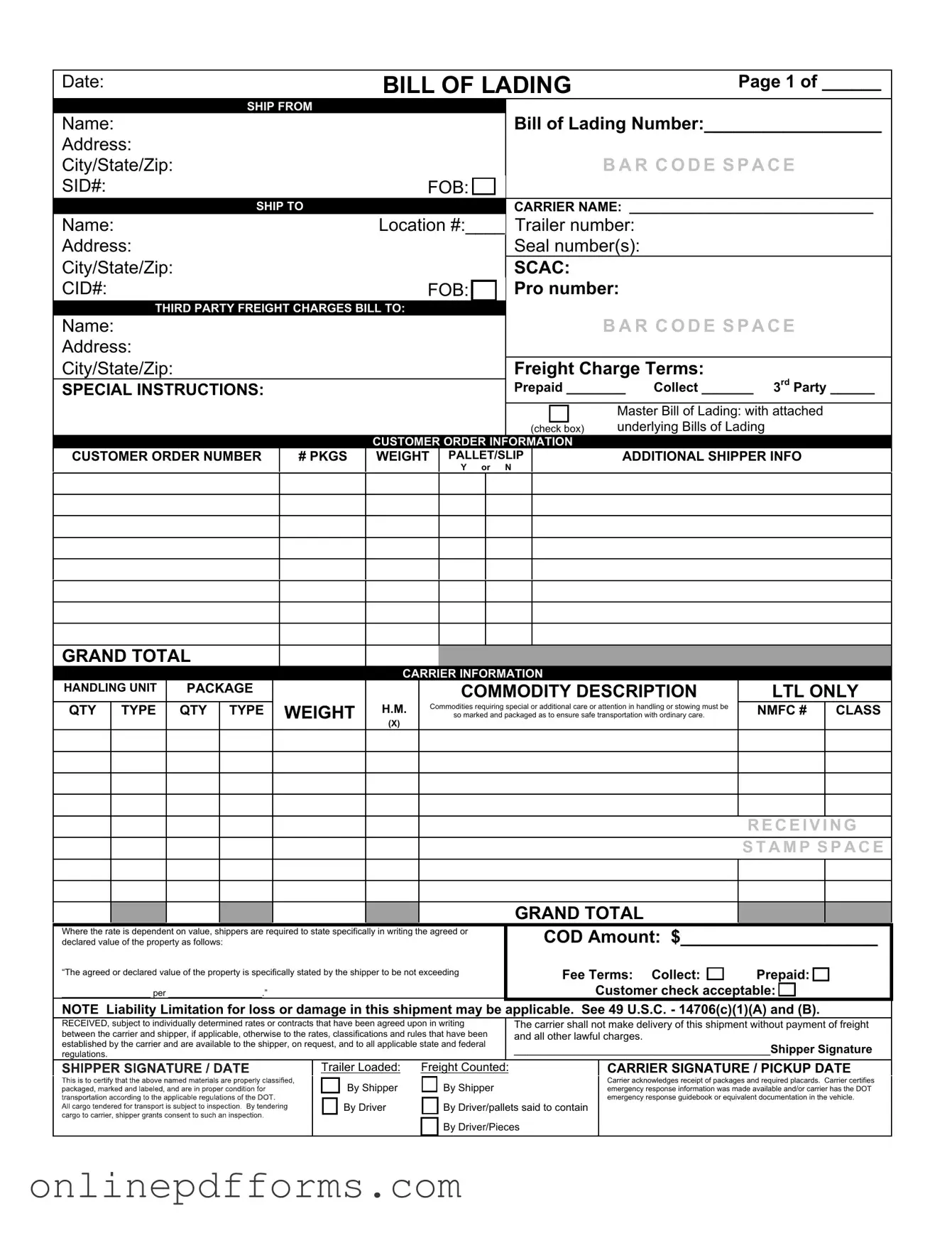Fill in Your Bill of Lading with a Supplement Template
The Bill of Lading with a Supplement form serves as a crucial document in the shipping industry, detailing the terms of transport and the responsibilities of the parties involved. This form not only outlines the goods being shipped but also includes any additional terms that may be necessary for a specific shipment. For those looking to streamline their shipping process, filling out this form is essential; click the button below to get started.
Open Bill of Lading with a Supplement Editor Now
